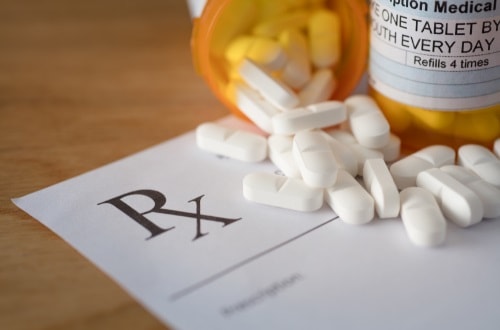Orphan Drugs: Managing Utilization for Optimal Outcomes
BY KATHRYN KOLONIC, DO, MPH, CPHQ
ALLMED VICE PRESIDENT & MEDICAL DIRECTOR
In the United States, the average annual cost of drugs to treat rare medical conditions—so-called orphan drugs—is 25 times higher than that of traditional drugs.1 As the number of orphan drugs grows and their uses proliferate, these high costs are having an outsized impact on payer, health plan, and member budgets.
In response, Medicare and payers across the board are implementing access controls and cost-sharing strategies, based on a variety of factors, to ensure appropriate use. Developing a treatment plan with confidence in this environment requires specialized expertise about not only a member’s specific medical condition but also the clinical evidence supporting proposed therapies.
Incentivizing Treatment for Overlooked Populations
For perspective on where we currently are, it’s helpful to look to the past.
The term “rare disease” is defined as a disease or condition that affects less than 200,000 people.2 In total, rare diseases affect between 25 and 30 million people in the U.S., yet only five percent of the approximately 7,000 rare diseases have available treatments.3
In 1983, Congress passed the Orphan Drug Act (ODA) with the goal of increasing the number of drugs available to treat rare diseases. Previously, pharmaceutical manufacturers had not been incentivized to invest in research on new products for patient populations that were too small to be profitable. At the time of the ODA’s passage, only 10 orphan drugs had come to market.4
The new legislation provided incentives—primarily financial—to manufacturers whose products received the orphan drug designation. The incentives helped to defray the cost of developing a drug and submitting it for marketing approval. By all accounts, the ODA has achieved its objective—by mid-2020, a total of 599 orphan products had been approved by the Food and Drug Administration (FDA), which is definite progress for people with rare diseases.5
In recent years, policy makers and researchers have begun to question whether the ODA incentives may also be having some unintended consequences in terms of their financial impact. Orphan drugs, some of which are used primarily to treat relatively common conditions, generate significant Medicare expenditures and billions of dollars of annual revenue. It’s not unusual for an orphan drug to cost more than $100,000 per year. Across commercial and Medicare plans, orphan drugs are typically placed in the specialty tier, where the member pays up to 40 percent of the drug’s full price. That can translate to out-of-pocket expenditures that exceed $40,000 per year.6
Understanding the Clinical and Economic Value of Orphan Drugs
Despite the high cost, for years insurers covered orphan drugs because the small populations involved typically did not lead to significant cost exposure.7 Over time, as the number of drugs granted orphan designation increased in parallel with healthcare cost pressures, payers began to rethink their approach. Today, many have implemented a range of tools to ensure appropriate utilization.8
Medicare Part D plans offer one example of the direction that payers have taken. A recent study found that ninety-two percent of orphan drugs covered by Medicare Part D have some utilization restrictions. Eighty-five percent were placed on the highest tier formulary, 76 percent required prior authorization, 33 percent had quantity limits, while only .034 percent had a step therapy requirement. 9
By contrast, research shows that private plans restrict orphan drugs approximately one-third of the time. Most often, these restrictions take the form of patient subgroup restrictions—i.e., requiring patients to meet certain clinical criteria, such as experiencing symptoms that limit the activities of daily living—or step therapy protocols.10 Private plans, too, place orphan drugs in the highest tier formularies.
How do Medicare Part D and private plans determine which coverage restrictions they will implement on which orphan drugs? Not solely by cost, as some might suspect, though cost is a strong predictor. Studies show that Medicare Part D plans base their decisions primarily on evidence, rewarding orphan drugs found to be more clinically effective and safer. Drugs with multiple indications are likely to have more restrictions as are those with black box warnings. Cost is certainly a factor—higher-cost drugs (with annual costs of $50,000 or more) are twice as likely to require prior authorizations as lower-cost drugs.11 Among private plans, restrictions are more often added to drugs for diseases other than cancer, drugs with alternatives, self-administered drugs, drugs indicated for diseases with a higher prevalence, and drugs with higher annual costs.12
In this dynamic environment, having a clear understanding of the clinical and economic value of specific orphan drugs is critical to sound decision-making. By collaborating with AllMed, you gain the knowledge and experience of over 350 actively practicing, board-certified physicians trained in more than 120 specialties and subspecialties. Leveraging their expertise can help your team navigate the complex and shifting terrain around orphan drugs to ensure that all members, including those with rare diseases, receive optimal, cost-effective care that aligns with plan policy.


